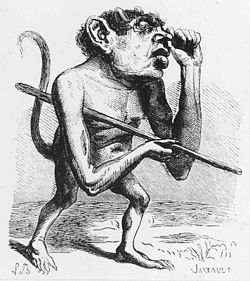
In demonology, Ronove is a Marquis and Great Earl of Hell, commanding twenty legions of demons. He teaches art, rhetoric, languages, and gives good and loyal servants the favour of friends and foes.
Contents
He is depicted as a monster holding a staff, without detailing his appearance. He is also described as taker of old souls; often coming to earth to harvest souls of decrepit humans and animals near death.
It is also spelled Ronové, Ronwe and Ronoweh.